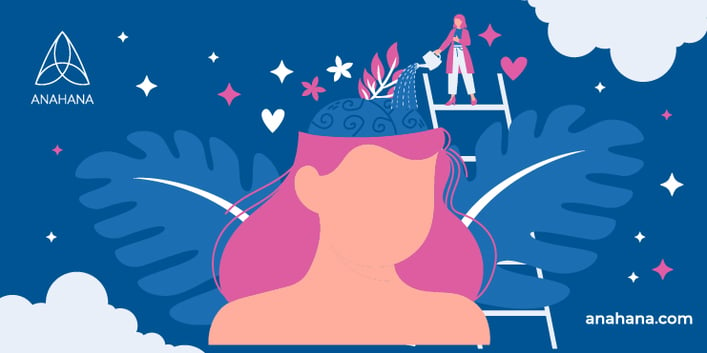
Table of Contents
Discover practical tips and techniques for effectively practicing mindfulness in your daily life. Learn the art of staying present, reducing stress, and cultivating a calmer mind through mindfulness meditation.
This comprehensive guide will help you integrate mindfulness into your routine, promoting overall well-being and inner peace.
Mindfulness is a hot topic that has gotten a lot of attention recently. Coaches, teachers, speakers, professors, or social media influencers – you name it, and at least one of those wellness industry individuals has likely touched upon mindfulness in the past.
Practicing mindfulness is all about cultivating a heightened awareness of the present moment. It is about simple yet effective techniques to help you integrate mindfulness into your daily life, fostering inner peace and reducing stress.
What is Mindfulness?
Mindfulness is paying attention to the present moment on purpose, without judgment.
In other words, it means being aware of what you're doing while you're doing it and not letting your mind wander off into thinking about the past or worrying about the future.
Practicing mindfulness daily is a challenge, especially for those new to it. Setting short-term or rushed goals is not advisable when embarking on a mindfulness journey.
Eventually, you will want to incorporate mindfulness in all aspects of your life, developing a mindfulness habit.
This includes mindful movement, eating, driving, reading, listening to music, regular mindfulness meditation practice, or even washing dishes.
Basic Principles of Mindfulness
-
Non-judgment: Accepting experiences without labeling them as good or bad.
-
Patience: Understanding that things unfold in their own time.
-
Beginner’s mind: Approaching life with curiosity and seeing things as if for the first time.
-
Trust: Having confidence in oneself and one’s feelings.
-
Non-striving: Being in the present moment without trying to achieve or attain anything.
Benefits of Mindfulness

The simple practice of mindfulness has been shown to provide a plethora of benefits, some of which are:
-
Improved physical and mental health
-
Increased focus and concentration
-
Decreased stress and anxiety levels
-
Enhanced emotional stability and well-being
-
Regulated nervous system and increased resilience
-
Increased sense of the present moment
-
Processing of negative emotions
-
Developed creative thinking and cognitive flexibility
-
Reduced emotional exhaustion
-
Improved chronic pain
-
Slowed down age-related cognitive disorders
Mindfulness helps lead to positive results in relationship building, strengthening, and overall communication patterns.
Whether in personal or professional life, those who practice mindfulness become better listeners, have fewer arguments, and build relationships with emotional regulation.
Easy Ways to Practice Mindfulness Meditation
Mindfulness and meditation practice go hand-in-hand. Meditation is a tool that can be used to practice mindfulness, and mindfulness is the goal of many meditation practices.
One way to practice mindfulness is to meditate. Meditation is a practice where you focus on one thing, such as your breath or a mantra.
The truth is that meditation is the most effective way of mindfulness-based stress reduction. Practiced regularly, mindfulness meditation improves one's brain and life.
Meditation aims to bring your attention back to the moment your mind wanders. You can practice mindfulness meditation anywhere, at any time. Various meditation techniques can be used for mindfulness, from walking to guided meditation.
Here is a simple mindful meditation practice that can be done in under five minutes.
-
Find a quiet place free of distractions: Starting at home is perfect, as this is when you usually feel comfortable and relaxed.
-
Bring attention to your breathing: Sit with your spine straight and close your eyes. Inhale and exhale deeply through the nose. Pay attention to how the breath feels going in and out of the body as you breathe. Allow thoughts to come and go without judgment when your mind wanders, which it will. Notice where it went off to and then bring it back to the states of awareness. Continue to breathe deeply.
-
Scan your body: Become aware of your bodily sensations and any areas of attention in the present moment. Release any tension you may be holding.
Simple Techniques to Begin Practicing Mindfulness
Mindful Breathing
-
Recognizing the sensation of the breath entering and leaving the nostrils or the rise and fall of the chest or abdomen.
Body Scan
-
Paying attention to various parts of the body, from the toes to the head.
-
Noticing any sensations, discomfort, or tension.
Mindful Eating
-
Paying full attention to eating, pausing before digging in, chewing slowly, savoring each bite, and being aware of the taste, texture, and aroma.
Mindful Walking
-
Walking slowly and deliberately, being fully present with each step and the sensations of movement and contact.
Thought Observation
-
Watching thoughts come and go without getting attached or reacting to them.
Practicing Mindfulness Outside Meditation

Who says mindfulness has to be boring? If you're looking for fun, engaging, mindful exercises to try without practicing mindfulness meditation, here are a few to get you started.
For starters, try mindful listening. Next time you're conversing, tune in to what the other person is saying. Listen with your whole body and notice how they’re expressing things non-verbally.
Avoid jumping into how you can respond to what they’re sharing, and don't let your mind wander off on another topic. Keeping your attention focused can be challenging, but practicing mindfulness is great.
Another fun exercise is mindful walking. Instead of letting your mind wander as you walk, pay attention to the sensations of your feet hitting the ground and the feel of the air on your skin.
Try mindful observing, where you take a few moments to look at your surroundings and notice all the little details.
These are just a few of the many mindful exercises you can try. If you're looking for guided support, check out some meditation and mindfulness apps such as Headspace, Calm, Insight Timer, and more.
More Ways to Practice Mindfulness
Mindfulness practice continues beyond there. The most beautiful and exciting part of introducing mindfulness into the daily routine is that it can touch upon almost all areas of everyday life.
Here are some additional mindfulness training methods with a less meditative approach.
Breathing Exercises
Breathwork is a mindfulness technique about taking just a few minutes to bring attention to the breath to help calm and center the mind. There are many different ways to do breathing exercises, such as box breathing, pranayama, deep breathing, holotropic breathwork, and more.
Yoga
Most people know that yoga is a great way to exercise the body, but it's also an excellent mindfulness exercise. The mindfulness component of yoga comes from focusing on the breath and the present moment while moving through each pose.
Some yoga poses, such as forward bend or child's pose, are explicitly targeted at opening up the potential of mindfulness skills.
Centering Exercises
Centering exercises are designed to help you find inner calm and focus. There are many different types of centering exercises, but they all share the goal of helping you connect with your inner self.
Mindfulness-based Cognitive Therapy
Less of an exercise, mindfulness-based cognitive therapy (MBCT) is a type of therapy that combines cognitive behavioral therapy with mindfulness practices. Scientific research shows that MBCT effectively treats depression, anxiety, and other mental health conditions.
Journaling
One of the most powerful mindfulness exercises that simultaneously improves the sense of self-awareness, journaling is a mindfulness practice anyone can do. Even just 2 minutes of journaling can create a shift in your state,
Mindfulness journaling focuses on the present moment and writes about your thoughts and feelings without judgment. The regular journaling practice can also be used to reflect on your mindful meditation experience, where you document any physical sensations, thoughts, or feelings.
Incorporating Mindfulness into Daily Life
It's essential to find what works best for you and be patient with yourself as you learn how to practice mindfulness throughout the day and allow these positive mindfulness interventions to improve your life.
Setting Time for Daily Meditation
Meditation, at its core, is a dedicated time to cultivate mindfulness and focused awareness. By setting aside a specific time each day, you can create a routine that allows you to tap into a state of calm, focus, and clarity.
For beginners, even just a few minutes of daily meditation can make a difference. As you become more accustomed, you can gradually increase the duration to suit your needs and preferences better.
Using Reminders to Practice Mindfulness
It's easy to get caught up in the hustle and bustle of daily life and forget to practice mindfulness. Using reminders, such as alarms or sticky notes, can prompt you to take a moment to ground yourself throughout the day.
These brief exercises can be as simple as taking three deep breaths, tuning into the sounds around you, or feeling the ground beneath your feet.
-
Technology to the rescue: Set alarms or notifications on your phone or smartwatch to remind you to take mindfulness breaks.
-
Visual cues: Place sticky notes around your home or workspace with mindfulness prompts. For example, you can use the statement: “Be here now.”
Incorporating Mindfulness into Routine Tasks
Daily tasks can become automatic and carried out without much thought. However, these routines offer perfect opportunities to practice mindfulness. It's about turning mundane tasks into profound awareness and quality presence moments.
-
Self-Care: While brushing your teeth, focus on the sensation of the bristles against your gums, the taste of the toothpaste, and the rhythmic movements of your hand.
-
Mindful showering: Pay attention to the sensation of water on your skin, the temperature changes, and the sound it makes. Burn a scented candle or use some essential oil aromatherapy to engage your sense of smell.
-
Conscious commuting: If you drive, focus on the sensation of your hands on the steering wheel. If you're a passenger, tune into the journey, observing all sights and sounds without judgment.
Joining Mindfulness Groups or Using Mindfulness Apps
Engaging with a community can be a great way to deepen and maintain your mindfulness practice. Joining a group offers the chance to learn from others, share experiences, and receive support.
On the other hand, mindfulness apps provide guided exercises, daily prompts, and tracking capabilities to keep you on track.
References
Ten yoga poses for mindfulness | Times of India
10 Simple Ways to Practice Mindfulness In Our Daily Life
Less stress, clearer thoughts with mindfulness meditation – Harvard Gazette
How to Practice Mindfulness: 11 Practical Steps and Tips ‘
What is Mindfulness: Benefits, How to Practice, and More
Disclaimer
The contents of this article are provided for informational purposes only and are not intended to substitute for professional medical advice, diagnosis, or treatment. It is always recommended to consult with a qualified healthcare provider before making any health-related changes or if you have any questions or concerns about your health. Anahana is not liable for any errors, omissions, or consequences that may occur from using the information provided.

By: Meriah McCauley
Meriah McCauley is a leading voice in holistic healing, known across North America for her expertise in chakra balancing, spiritual alignment, and energy-based wellness. Her work bridges the art and science of mind-body healing, shaped through years of study, practice, and mentorship. Meriah deepened her understanding of spiritual anatomy and the chakra system under the guidance of her guru, Dr. Don Stapleton, during her immersive training in Costa Rica. She later earned her Master’s degree in Psychology from Columbia University, specializing in Spirituality and the Mind–Body connection, which continues to influence her integrative approach. Today, she supports individuals and practitioners through coaching, yoga teacher trainings, chakra-focused education, and Holotropic Breathwork for personal transformation. Meriah is dedicated to helping others develop emotional clarity, energetic balance, and spiritual resilience—and she remains committed to guiding anyone seeking a deeper, more meaningful connection with themselves.